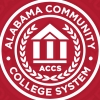|
Getting your Trinity Audio player ready...
|
Alabama’s higher education institutions are experiencing a notable increase in enrollment for the Fall 2024 semester, according to preliminary data released by the Alabama Commission on Higher Education (ACHE). The report highlights a 7.3 percent increase in enrollment at public community colleges and a 2.6 percent rise at public universities compared to the previous year.
Community colleges across the state have seen particularly strong growth, with a total preliminary enrollment of 88,499 students. This surge is significantly influenced by a 12.7 percent increase from Fall 2023 to Fall 2024. Dual enrollment, where high school students concurrently take college courses, accounts for nearly 32 percent of the total undergraduate population at these institutions.
Among the community colleges, Jefferson State Community College recorded the highest enrollment, with 9,697 students. Calhoun Community College followed closely with 8,767 students. Other institutions, such as Coastal Alabama Community College and Wallace Community College in Selma, also reported robust numbers, with 7,744 and 5,736 students, respectively.
On the university front, Alabama’s public universities saw a combined total enrollment of 181,586 students, with a 2.6 percent increase from the previous year. The University of Alabama remains the largest institution in the state, boasting 41,021 students across its undergraduate and graduate programs. Auburn University also reported significant numbers, with 34,160 students enrolled for the fall semester.
The report also sheds light on dual enrollment figures at universities, which make up 4.9 percent of the total undergraduate enrollment. Despite the lower percentage compared to community colleges, this figure reflects the ongoing popularity and importance of dual enrollment programs in Alabama’s higher education landscape.
The increase in enrollment across the state’s institutions is a positive indicator for Alabama’s educational system, suggesting a growing interest in higher education among residents and the effectiveness of outreach and recruitment strategies implemented by these institutions.
As Alabama’s educational landscape continues to evolve, the emphasis on accessibility, dual enrollment, and the expansion of academic programs will likely play a crucial role in sustaining and furthering this growth trend.
















































